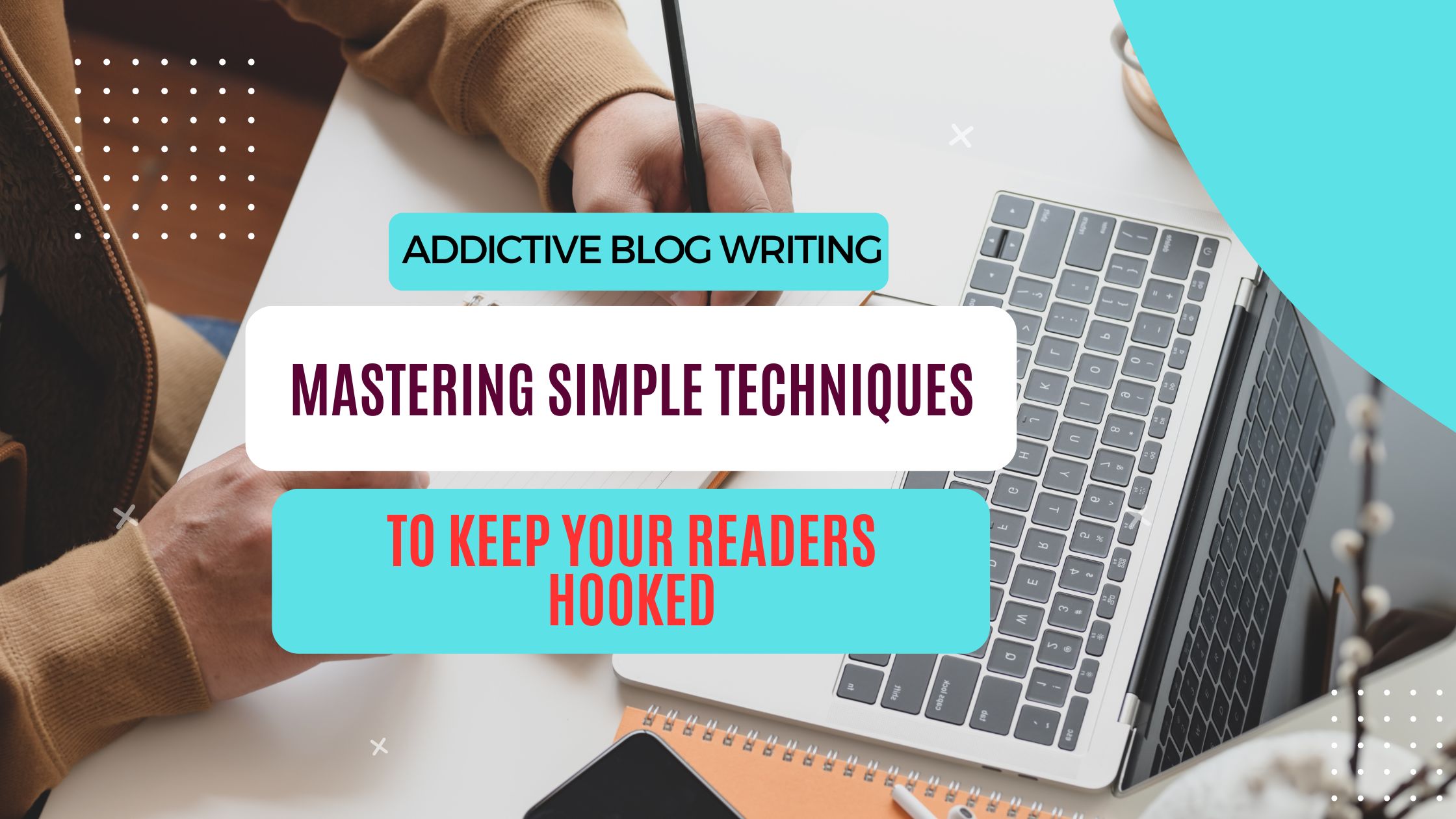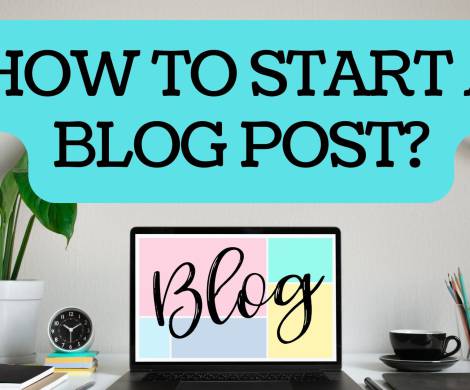Simple writing techniques to make your blog addictive

Do you want to write blog posts that keep your readers hooked from start to finish? Do you want to grow your audience and turn them into loyal fans? Do you want to stand out from the crowd and create a unique voice for your brand?
If you answered yes to any of these questions, then this blog post is for you. In this post, I will share with you some simple writing techniques that can make your blog addictive and irresistible. These techniques are based on proven principles of psychology, storytelling, and persuasion that can help you captivate your readers and make them crave more.
The Techniques

1. Use catchy headlines.
Your headline is the first thing that your readers see when they come across your blog post. It’s also the main factor determining whether they will click on it. Therefore, you must craft headlines that grab attention, spark curiosity, and promise value. A good headline should be clear, concise, and compelling. It should also include keywords that match your topic and audience. Some examples of catchy headlines are:
- How to Write a Blog Post in 30 Minutes or Less (Even if You’re a Beginner)
- The Ultimate Guide to Finding Your Niche and Dominating It
- 7 Mistakes You’re Making with Your Email Marketing (And How to Fix Them)
2. Hook them with a strong introduction.
Once you have a catchy headline, you need to hook your readers with a strong introduction. Your introduction should set the tone for your blog post, establish your credibility, and entice your readers to read on. A good introduction should:
- Address a problem or a pain point that your readers have
- Explain why it’s important or urgent to solve it
- Preview how you will help them solve it
- Include a call to action or a question to engage them
For example:
“Have you ever struggled with writing a blog post? Do you feel like you don’t have enough time, ideas, or skills to create engaging content? Do you wish you could write faster and better without sacrificing quality?
If so, you’re not alone. Writing a blog post can be challenging, especially if you’re a beginner or have a busy schedule. But don’t worry, because I have some good news for you. In this blog post, I will show you how to write a blog post in 30 minutes or less, even if you’re a beginner. You will learn how to plan, write, and edit your blog post in a simple and effective way. By the end of this post, you will be able to write more blog posts in less time and with more confidence.
Are you ready? Let’s get started!”
3. Write in a conversational tone.
One of the best ways to make your blog addictive is to write in a conversational tone. A conversational tone is friendly, casual, and personal. It makes your readers feel like they are talking to a real person, not reading a boring textbook. A conversational tone also helps you build rapport and trust with your readers, which can lead to more engagement and loyalty.
To write in a conversational tone, you should:
- Use simple words and sentences
- Use contractions (e.g., I’m instead of I am)
- Use pronouns (e.g., you, me, we) and address your readers directly
- Use questions and exclamations to add emotion and interest
- Use humor and anecdotes to add personality and humor
For example:
Hey there! Welcome to my blog! I’m so glad you’re here!
In this blog post, I’m going to share with you some of my favorite tips and tricks for finding your niche and dominating it. Finding your niche is one of the most important steps for starting and growing a successful blog. It can help you attract the right audience, create valuable content, and stand out from the crowd.
But how do you find your niche? And how do you dominate it? That’s what I’m going to show you in this post. You’ll learn how to:
- Identify your passions and skills.
- Research your market and competitors
- Define your target audience and their needs
- Create a unique value proposition and brand identity
- Test and validate your niche idea
Sounds exciting, right? Let’s dive in!
4. Break up your text with subheadings, bullet points, and images.
Another way to make your blog addictive is to break up your text with subheadings, bullet points, and images. These elements can help you organize your content, highlight key points, and make it easier for your readers to scan and digest. They can also add visual appeal and variety to your blog post.
To break up your text effectively, you should:
- Use subheadings to divide your content into sections and make it more readable.
- Use bullet points to list items or ideas and make them stand out.
- Use images to illustrate your points, add context, and create interest.
- Use white space to create breathing room and prevent overwhelm.
For example:
Section 1: Identifying Your Passions and Skills
Subheading: What are you passionate about?
- Make a list of your hobbies, interests, and activities that you enjoy doing
- Think about what motivates and excites you
- Ask yourself, what would you do if money was no object?
Subheading: What are your skills and strengths?
- Make a list of your talents, abilities, and experiences that you’re good at
- Think about what others appreciate or admire about you
- Ask yourself, what do you feel confident and competent doing?
Image: Illustration of a person thinking and brainstorming

Section 2: Researching Your Market and Competitors
Subheading: Who are your competitors?
- Make a list of your competitors in your niche or industry
- Check their websites, social media, and content to see what they offer
- Identify their strengths and weaknesses and how you can differentiate yourself
Subheading: Who is your target audience?
- Make a profile of your ideal reader or customer
- Define their demographics, interests, needs, and pain points
- Use tools like Google Analytics, surveys, or social media insights to gather data
Bullet points:
- What are the most common problems or questions your audience has?
- What are the most popular keywords or topics in your niche?
- What are the trends or changes in your industry that affect your audience?
Image: Infographic or chart showing market research data or statistics

Wrap-Up
By using these simple techniques, you can create blog posts that are engaging, informative, and memorable. Remember always to keep your audience in mind and provide value that they can’t find anywhere else. Happy blogging!







Follow